You probably don’t know this, but there had been many animal experiments in different parts of the world. This is why we have so many hybrids. Our technology has advanced so much that we could produce offspring of two species with close enough DNA. One of the most famous hybrids is a liger, but there are many more out there. The possibility is endless, and it can be confusing. Have you ever wonder what it would look like if a tiger and a lion mate? Their offspring would either be a tigon or a liger, depending on their sex. There is a slew of other strange hybrids that don’t exist in nature, but several don’t need human interference. Are you excited to see them all up close and personal?
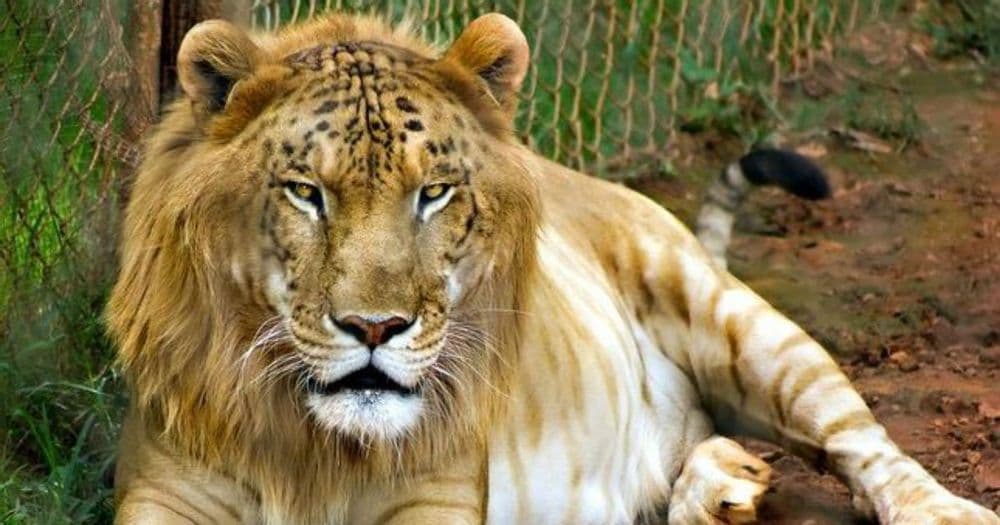
You Probably Had No Idea That These Animal Hybrids Even Existed
Liger
It’s pretty straightforward. When a female tiger and a male lion meet, you get a liger! Because of this unusual mixture, they may develop to be larger than any parent. This makes the liger the world’s largest feline. Regrettably, the scale contributes to health issues such as heart disease. That is why they typically do not survive as long as tigers and lions. The organs in their bodies usually are too tiny for their massive bodies.

Liger
Cama
What exactly is a cama? It is the offspring of a llama and a one-humped camel hybrid. The camel was produced at Dubai’s Camel Reproduction Centre. It was developed as part of a project to create a sheep that could provide more wool than a llama while still having a stronger disposition than a camel. Since a male camel is five times the female llama’s weight, the cama was created by artificial insemination.
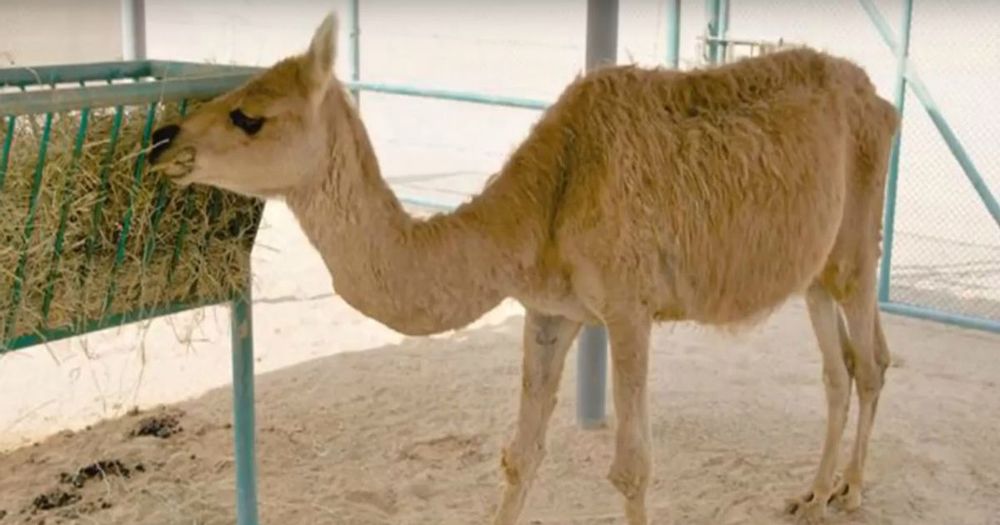
Cama
Zonkey
Do you believe that passion is deafeningly blind? If a zebra and a donkey marry and produce a zonkey, this may be the case. This creature is either a zebroid or a zebra cross. The zonkey is the rarest of all of them. In terms of genetics, donkeys and zebras have a lot in common. The cross is an intriguing mixture, but there is a drawback to this combination. Dwarfism is a common trait among Zonkeys!
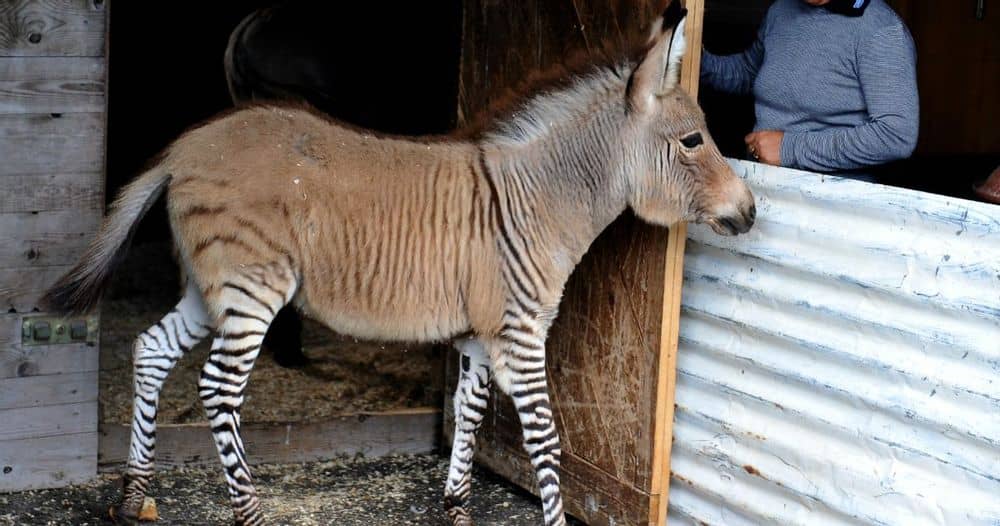
Zonkey
Grolar Bear
You would possibly infer that the bear in this picture is a hybrid between a polar and a grizzly bear from looking at its coloring. This breed, also known as the grolar or pizzly, can be found both in the wild and captivity. The two groups of bears generally dislike each other. Polar bears have been forced to migrate south due to shrinking ice caps. As a result, they’ve been running into their brown peers more often.
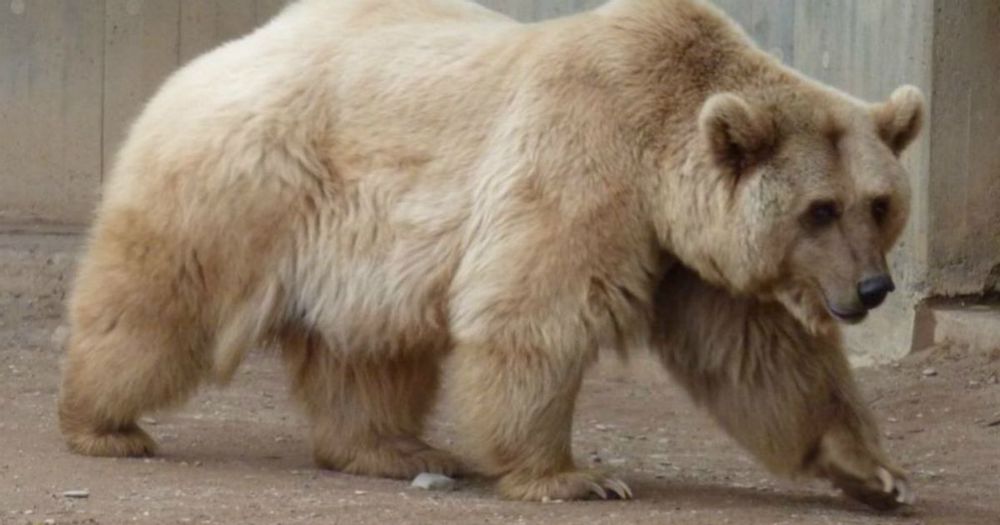
Grolar Bear
Zorse
Often a zebroid is a zorse. It is a hybrid between a horse and a zebra, which distinguishes it from zonkeys. Since horses and donkeys have separate chromosome numbers, horses are genetically more distant from zebras than donkeys. As a result, congenital disabilities such as dwarfism are becoming increasingly common. The lovely hybrids usually have distinguishing characteristics. Stripes are typically seen in isolated locations on those with spots.
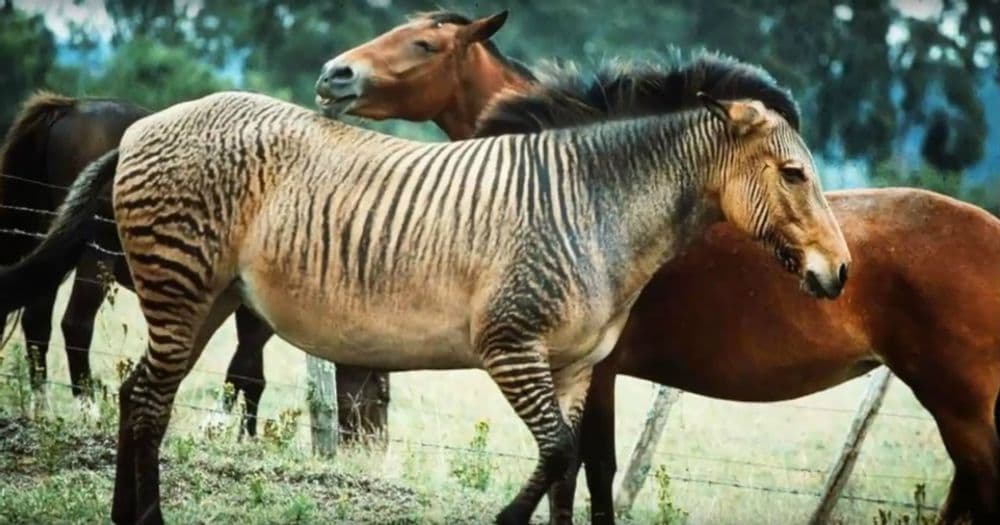
Zorse
Savannah Cat
When a domestic cat and an African wild cat is known as a serval, are crossed, this is the result. The Savannah cat is a fascinating character that is often docile. It gained popularity in the 1990s, but it wasn’t until the new millennium that it became a recognized cat breed. The positive thing is that there aren’t too many health problems associated with it! You may even keep one as a house pet if you want to.
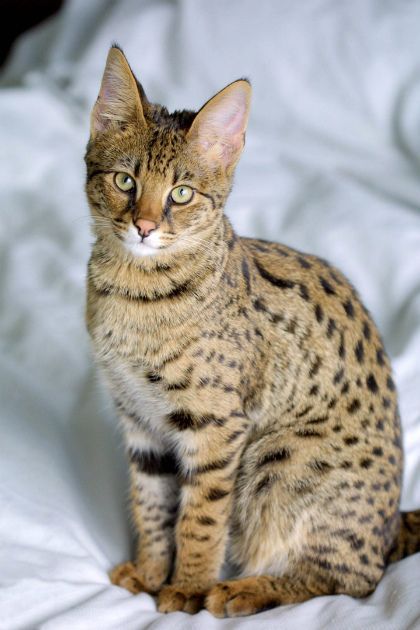
Savannah Cat
Wholphin
You are looking at Kawili Kai, who is part wholphin and part dolphin. Her mother, Kekaimalu, is the only wholphin known to exist. The wholphin is part dolphin and part false killer whale. Even though the name suggests that a wholphin is a part whale, you should remember that a false killer whale is nothing more than a type of dolphin. Its rarity makes it unique, however. Kekaimalu is the known living wholphin.
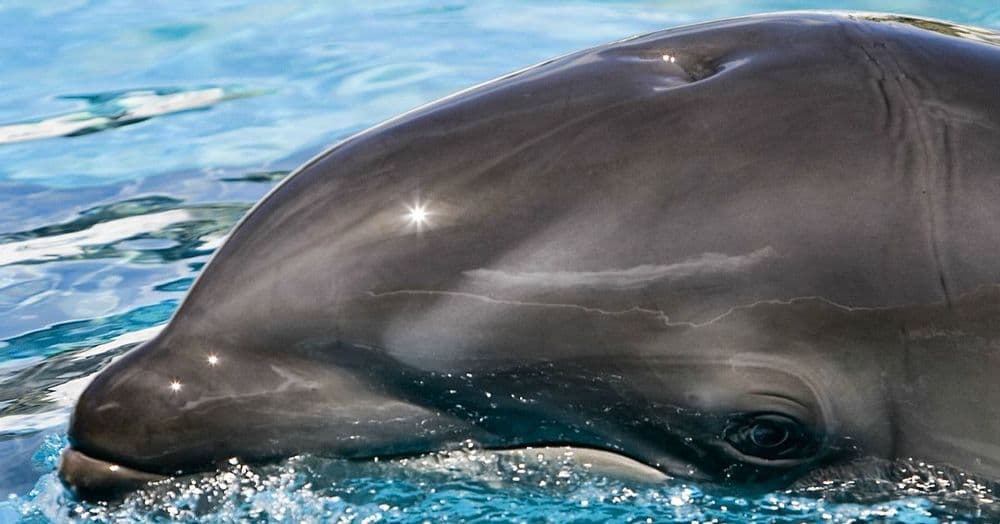
Wholphin
Beefalo
When explorers first introduced livestock to the New World in the 18th century, they inadvertently mixed bison and cattle. They were then crossbred more purposefully, but a few of them escaped. Wild herds of beefalo can now be found along the Grand Canyon. They cause mayhem by emptying watering holes and causing havoc wherever they go! It’s now up for discussion whether or not we can apprehend them.

Beefalo
Tigon
They crossed a male tiger and a female lion to create the Tigon. The parents’ sex is what distinguishes it from a Liger. You’d assume the tigon and the liger will be identical in appearance, but they’re not. Tigons do not evolve to the same size as ligers and do not experience dwarfism. They are, on average, younger than their immediate relatives.
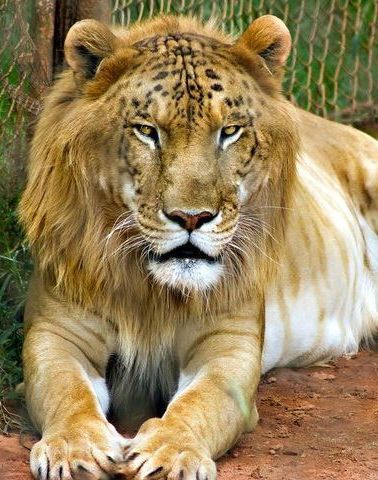
Tigon
Wolfdog
You should possibly tell who a wolfdog’s parents are. It resembles a cross between a dog and a wolf in appearance. We haven’t seen domesticated pets in thousands of years. Despite this, sure pet owners want more wolf-like characteristics in their animals. Wolfdogs, on the other hand, are notorious for being more dangerous and unpredictable than house dogs. There’s an explanation they’re prohibited in some jurisdictions. Even if this is the case, it is a rather attractive insect.
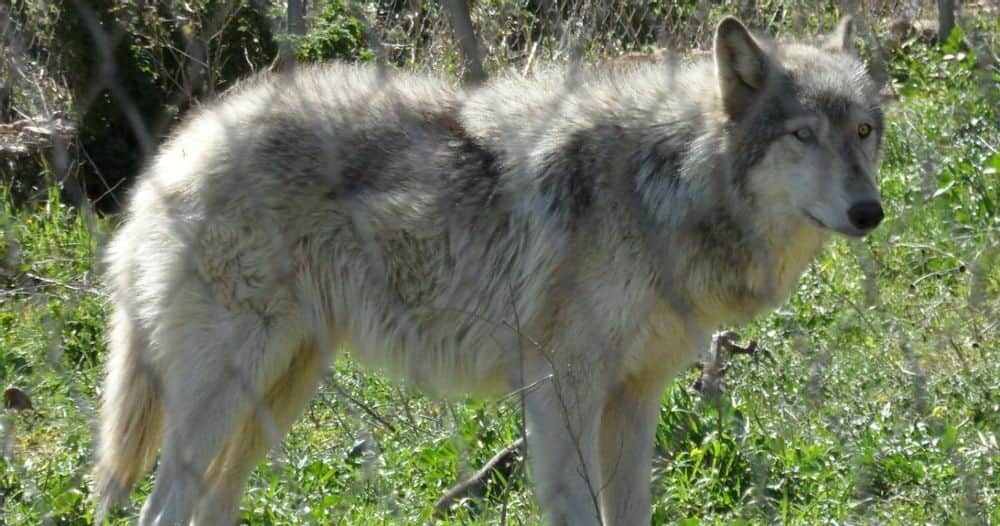
Wolfdog
Jaglion
There are several large cat hybrids on the market. Each of them is the Jaglion. It’s a hybrid between a lioness and a jaguar. This photograph depicts Jazhara, a female jaglion born by chance in Bear Creek Sanctuary in 2006. Tsunami, her brother, has the appearance of a leopard rather than a jaguar or lion. Since they were brought to the sanctuary, where they all remain, their friends, Diablo and Lola, have become inseparable.
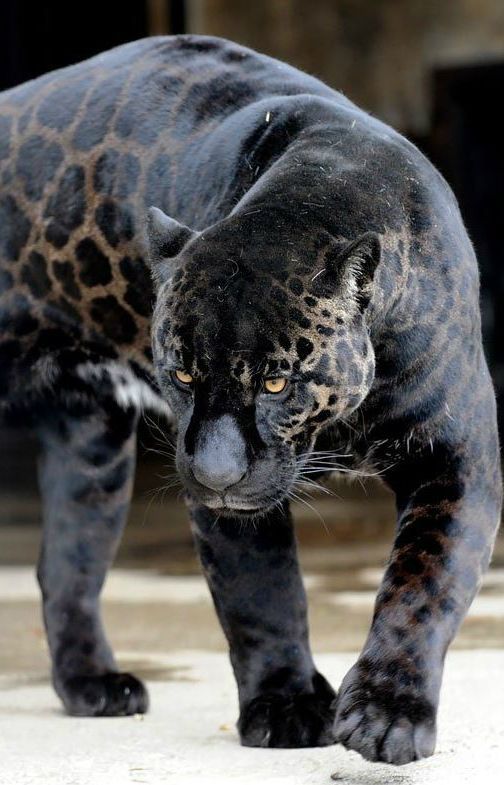
Jaglion
Narluga
Unlike other hybrids, Narlugas survive in the wild. Since they have to share a habitat, the mixing of narwhal and beluga whales may be caused by climate change. They don’t have horns, but they do have narwhal-like heads and shading. Their appearance is similar to that of a beluga whale.
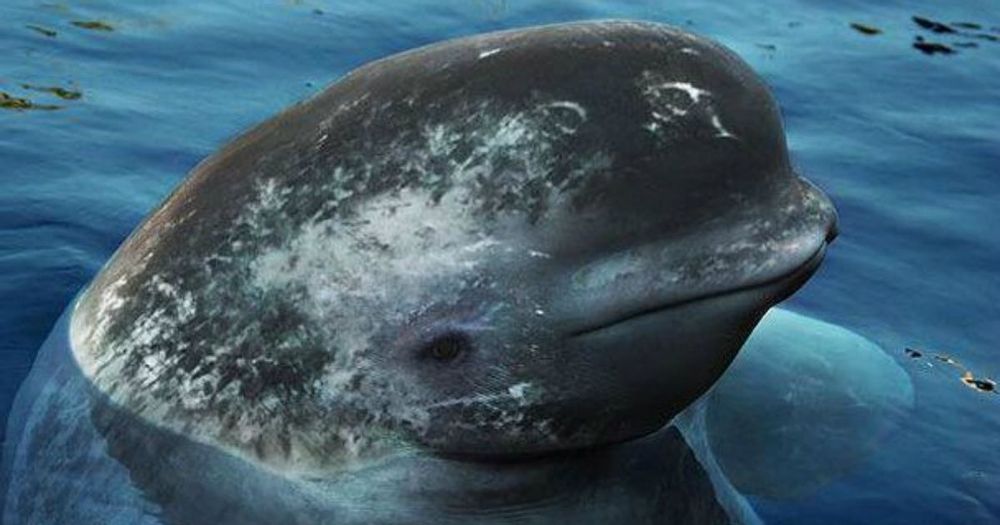
Narluga
Mule Bird
How adorable is that? The mule bird is a hybrid between the canary and the goldfinch. Since they were once bred as house cats, they are now known as British finches. Since too many citizens were killed or captured in the United Kingdom, the government agreed to hunt them unlawful in 1981.

Mule Bird
Blood Parrot Cichlid
The blood parrot cichlid’s identity isn’t the oddest part about it. The blood parrot cichlid is a hybrid between a cichlid and a Midis fish with two distinct ancestors. The final product looks fantastic, but it has a few genetic flaws, such as a mouth that won’t shut. They have a habit of leaving a lot of trash behind while they feed! Keep that in mind. These animals have a voracious appetite.
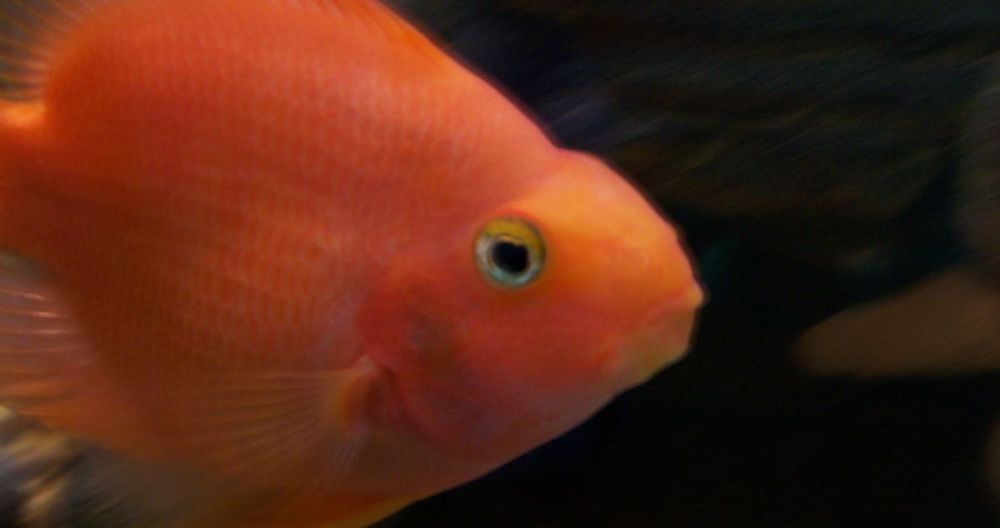
Blood Parrot Cichlid
Mulard
This creature’s name is derived from the words mallard and mule. Given that it is a cross between Pekin and Muscovy ducks, it makes sense. This creature isn’t bread because of how it appears but because of how it feels. Mulards are calmer and more hardy, which ensures they provide stronger foie gras and beef.

Mulard
Coydog
The coydog, as the wolfdog, has readily identifiable owners. If you guessed a cross between a dog and a coyote, you are right. These animals were born for centuries in pre-Columbian Mexico, but they are now bred in captivity. Wolfdogs are known to be more dependable and cool. Coydogs, on the other side, are more mischievous animals!
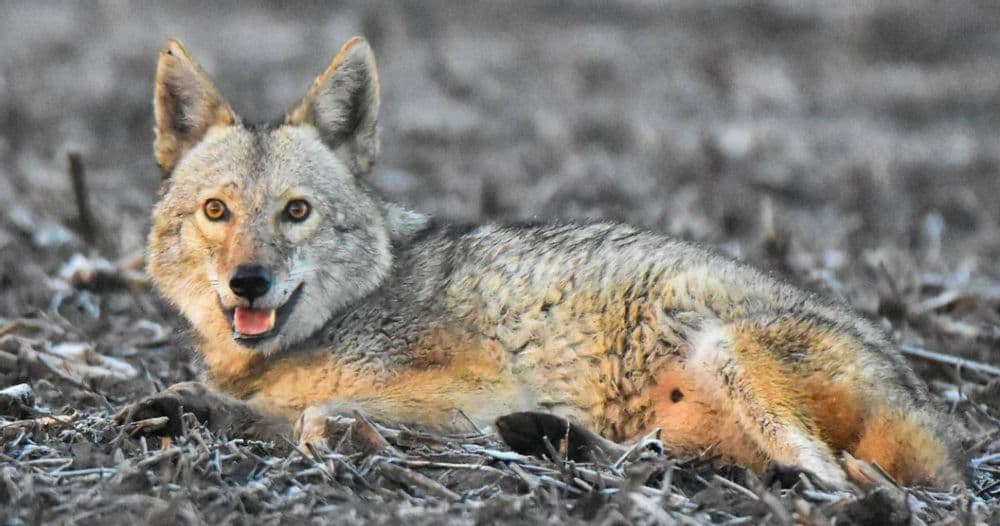
Coydog
Dzo
Yaks and cattle are raised together in Tibet and Mongolia to create more demanding livestock. The resulting animal is the dzo, which is also known as the yattle in certain English-speaking nations. In terms of meat and milk production, they are usually more active. However, the males are sterile, which is a concern. As a result, this species, like the mule, may be considered a genuine hybrid created for practical purposes.

Dzo
Mangalica
Even though it is not a true hybrid, the Mangalica is a strange creature. It resembles a cross between a sheep and a goat! The Mangalica is a Hungarian prig that has been developed specifically to manufacture lard. In the 1980s, it was on the verge of extinction, but farmers have been breeding more of them in recent years. While having cute woolly curls, they are well known for their famous sausages.

Mangalica
Bernedoodle
The “doodle” craze has recently swept the dog breeding scene. The bernedoodle is a hybrid between a poodle and a Bernese mountain dog, but it may not develop as large as the latter due to its poodle genes. This breed is noted for being a laid-back and playful dog that enjoys swimming and running.
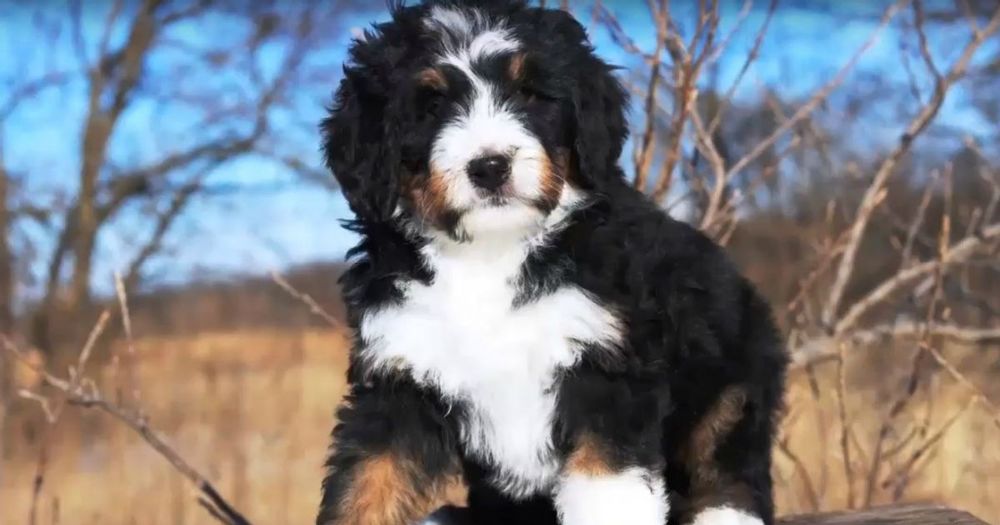
Bernedoodle
Iron Age Pig
The iron age pig is a cross between a domestic pig and a wild boar, in case you were curious. Initially, they were bred to resemble something from an Iron Age cave wall painting. As a result of several of these creatures ending up in the wild, they have become introduced organisms in various United States areas.

Iron Age Pig
Geep
The geep, also known as a shoat, is a hybrid of goat and cow. If you ask us, regardless of its parentage, it is utterly cute! We regret to inform you that the mixture is complicated to come across. The reality that they are primarily stillborn contributes to their rarity.

Geep
Coywolf
Biologically, wolves and coyotes only diverged about 300,000 years ago. In the grand scheme of things, this is all very new. It’s easy to understand that the two animals are both able to reproduce with relative ease. The coywolf is the product, a beast with identical personality traits to each of its kin. Where it comes to scale, it’s typically anywhere between a wolf and a coywolf.
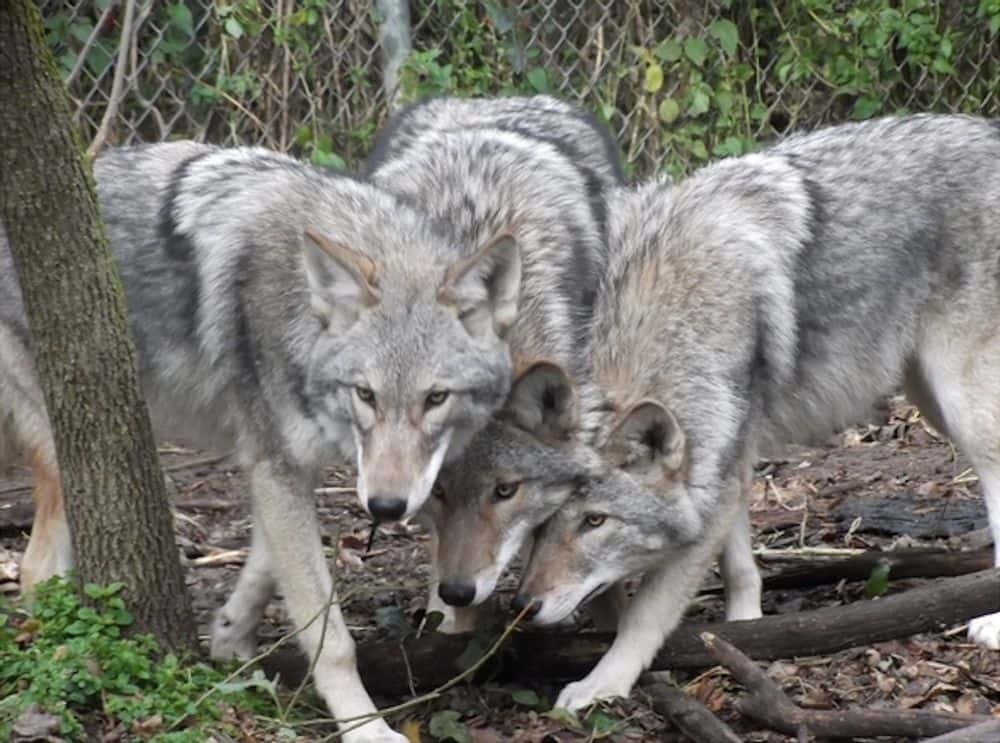
Coywolf
Hinny
Do you want to guess what mix the Hinny is? Yep, it’s a female donkey and a male horse. If you thought this was just a mule, you are wrong. You can know the difference between the two. The mule is the result of a mix between a female horse and a male donkey.
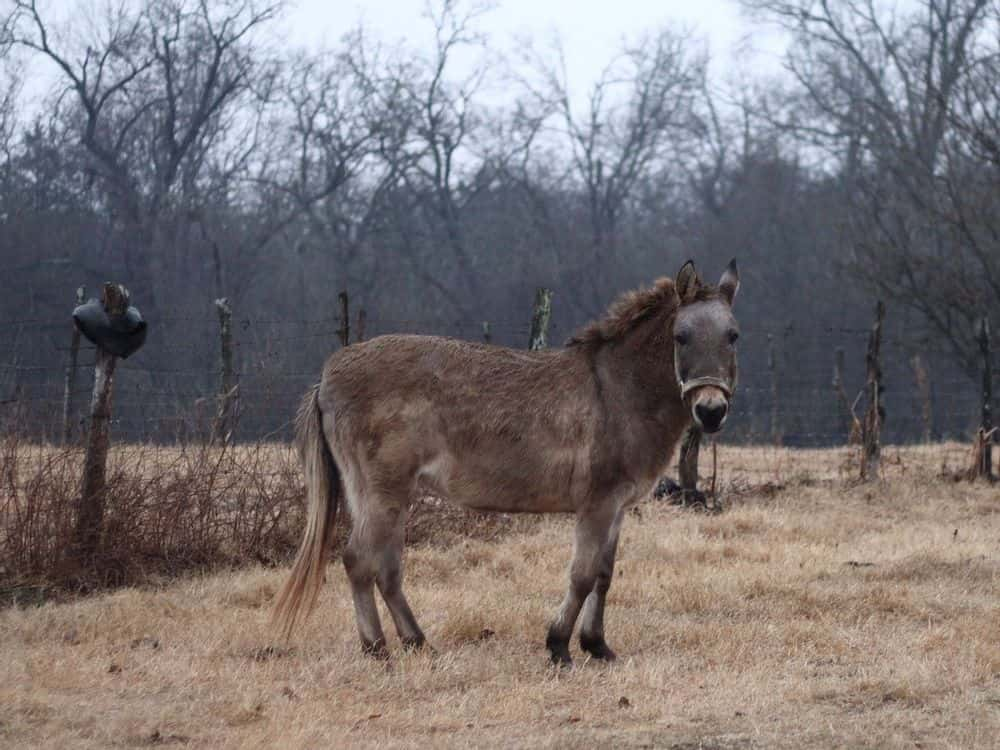
Hinny
Leopon
You’re looking at a cross between a lioness and a male leopard that has resulted in a hybrid breed. The head resembles that of a female lion. Regardless, the rest of its body is more like its parent. The leopon is a one-of-a-kind breed that can only be born in captivity.
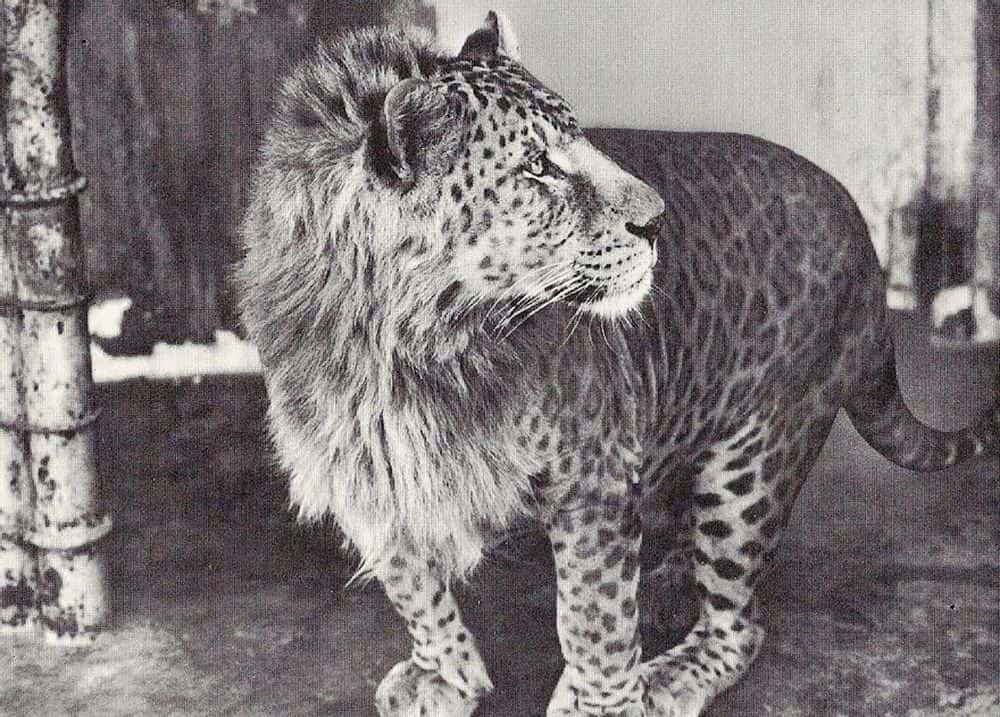
Leopon
Zubron
This is a zubron. This being is the offspring of a cow and a European bison hybrid. It was designed to take the place of cattle on the European continent, but it failed miserably. Just a tiny herd of it survives, and they all remain in Poland’s Bialowieski National Park.

Zubron
Toyger
When you cross a Bengal dog with a Domestic Shorthair tabby, you get the Toyger. This animal was first raised in the United States in the 1980s to increase concern for the tiger species’ survival. By 2020, there will be 469 licensed Toygers worldwide.
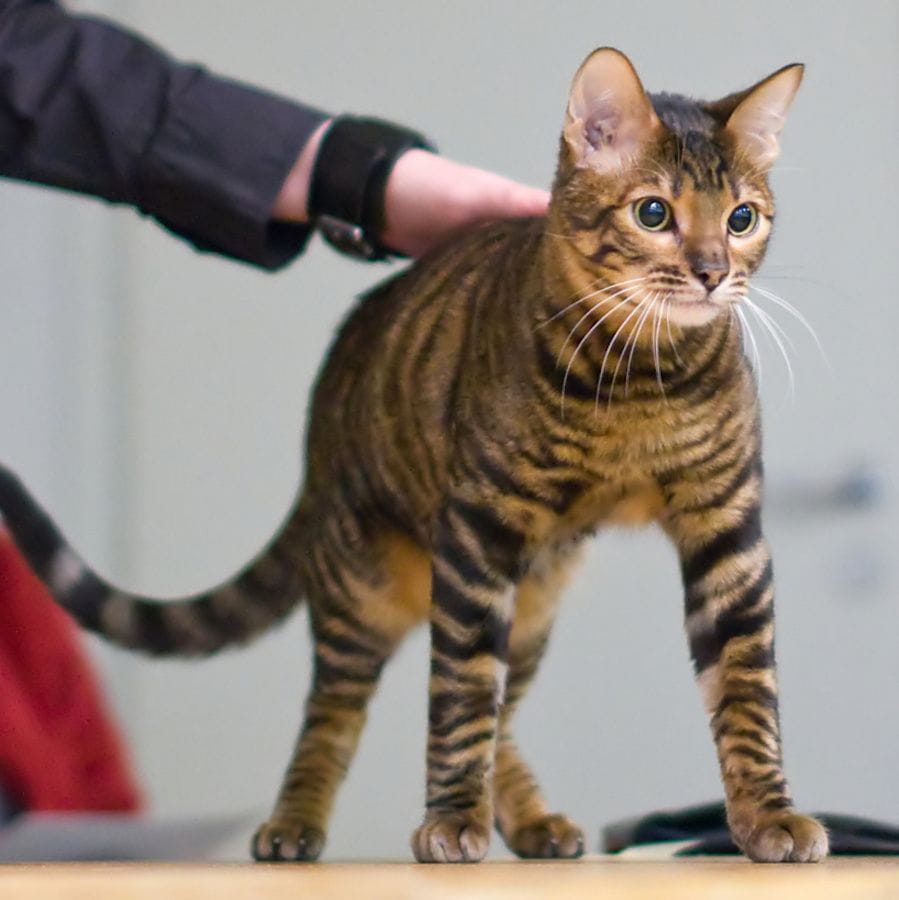
Toyger
Litigon
The litigon may be spoken of as the polar opposite of the liger. The tigon is a hybrid species that was created by crossing a lioness and a male tiger. In a zoo in Haikou, China, a 6-year-old tigon gave birth to two litigons. This historical event occurred on June 24, 2016.
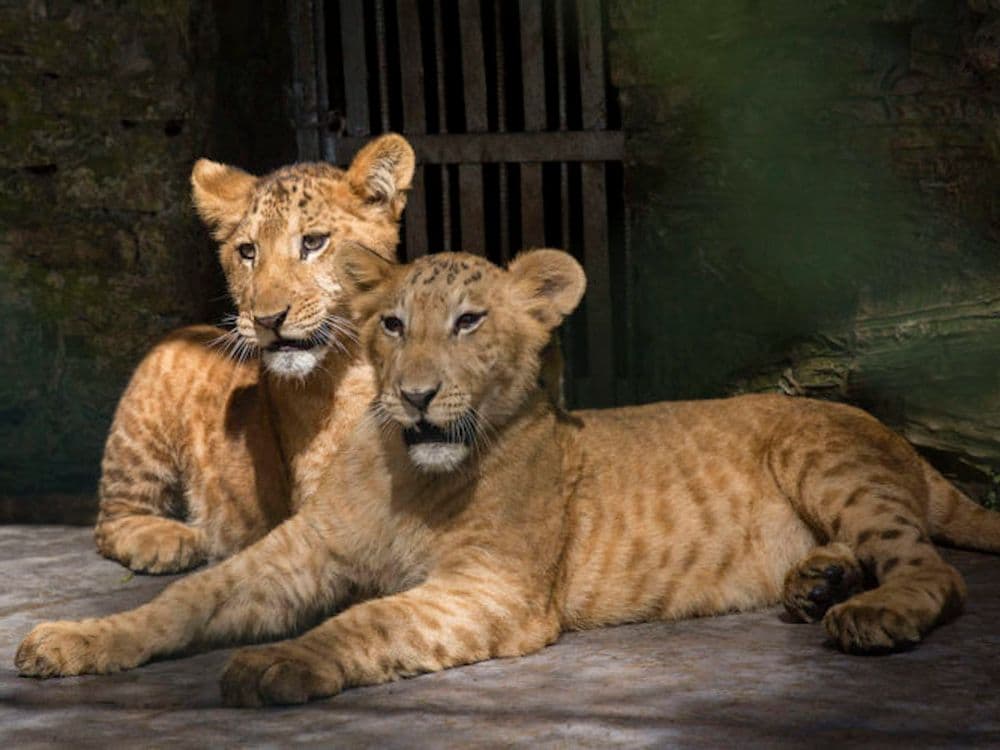
Litigon
Green Sea Slug
You are not the only one who feels the term “green sea slug” will be appropriate for a sci-fi film creature. It’s the color for a cause. The sea slug’s DNA contains the genetic material of the algae on which it feeds. It mutates it into an animal-plant hybrid capable of consuming food or producing its own. That sounds incredibly easy. We are confident that it would come in handy while they are hungry.
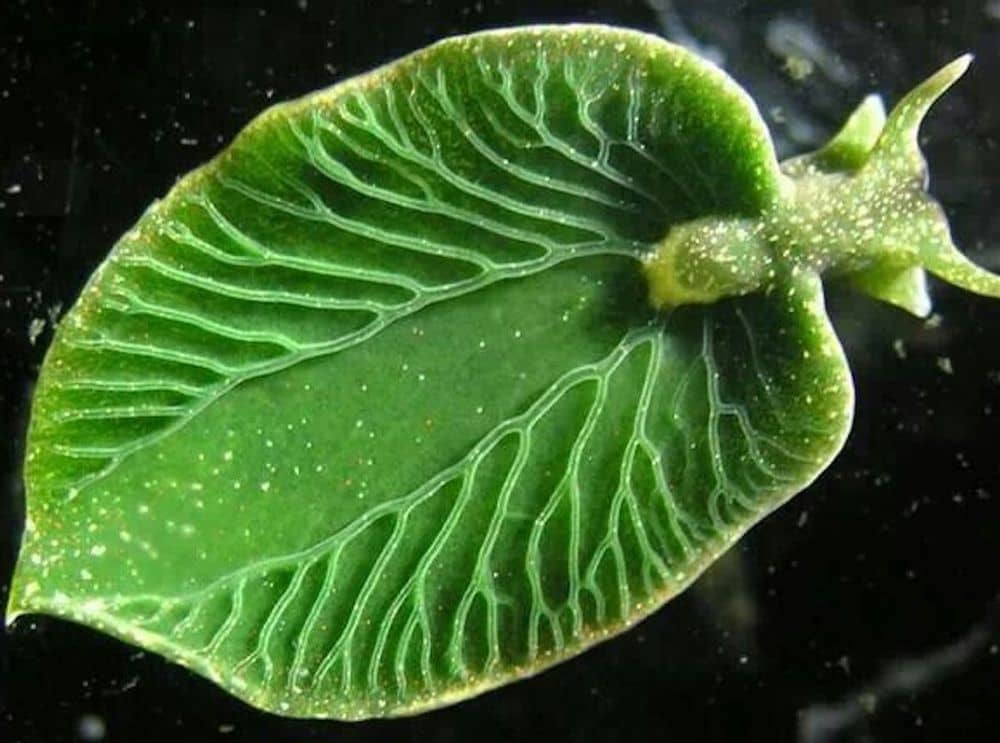
Green Sea Slug
Zony
We are sure that you would identify with us when we suggest that the zony resembles the horse. When you learn of its kin, it all makes sense. It seems to be the product of a cross between a pony mare and a zebra stallion.

Zony
Pumapard
When you cross a male puma with a female leopard, you get this. When a male leopard and a female puma marry, a pumapard is born. Dwarfism is a common congenital disability in this hybrid animal. It does not typically rise to be as large as a puma or a leopard.
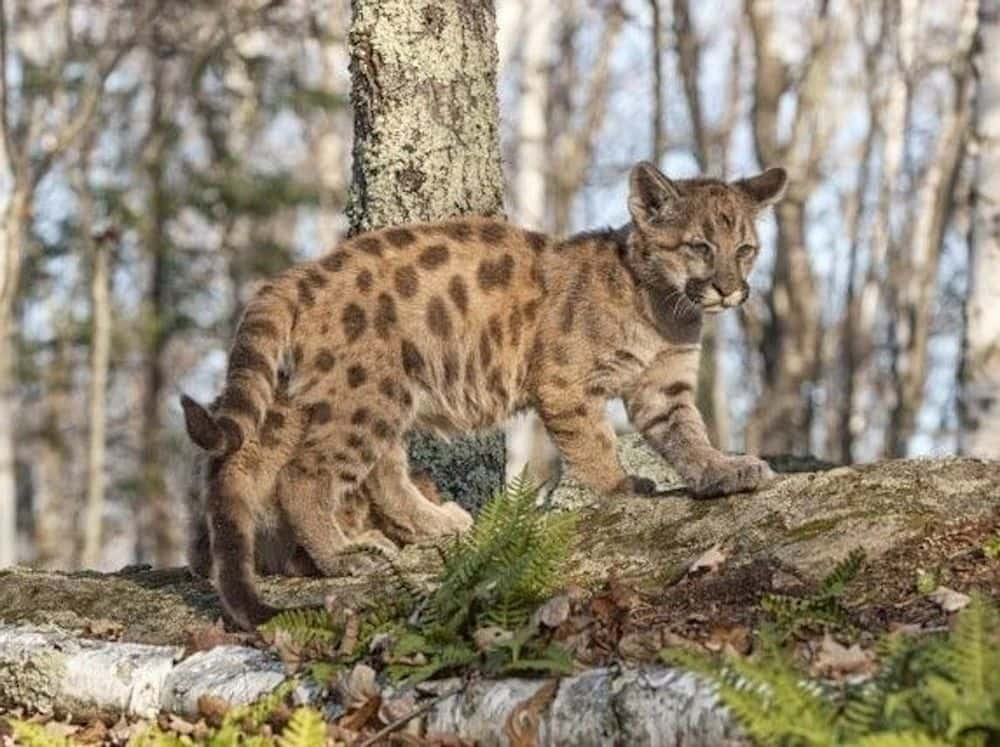
Pumapard
Gajasimha
It’s enthralling to hear more about these animal hybrids. Why not dig at mythological ones as well? The Gajasimha is an Indian legendary beast with the head of an elephant and the body of a lion. Outside of the drawn and sculptural representations, it isn’t easy to understand much about it. The majority of them can be found in temples in South India and Southeast Asia.
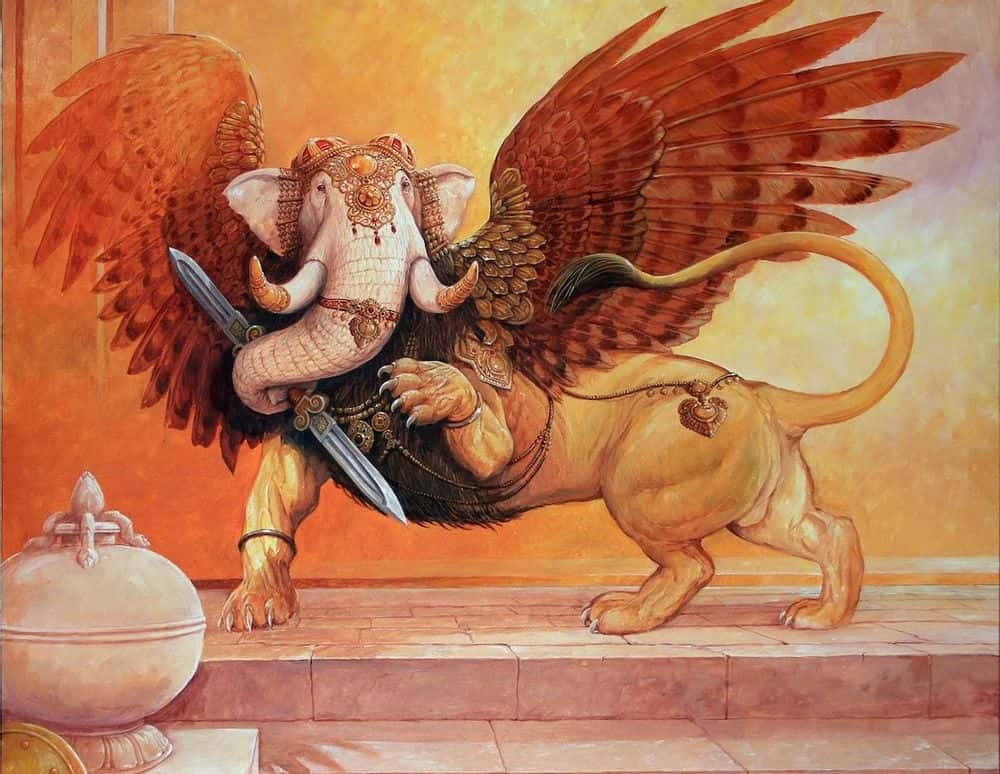
Gajasimha
Buraq
The Buraq, on the other side, is a legendary beast used in Islamic literature. It’s a horse-like creature with a peacock tail and a human face. What an odd mix! We’re curious who thought about it. If you’re unfamiliar with the faith, this creature is notorious for transporting prophets to Heaven.
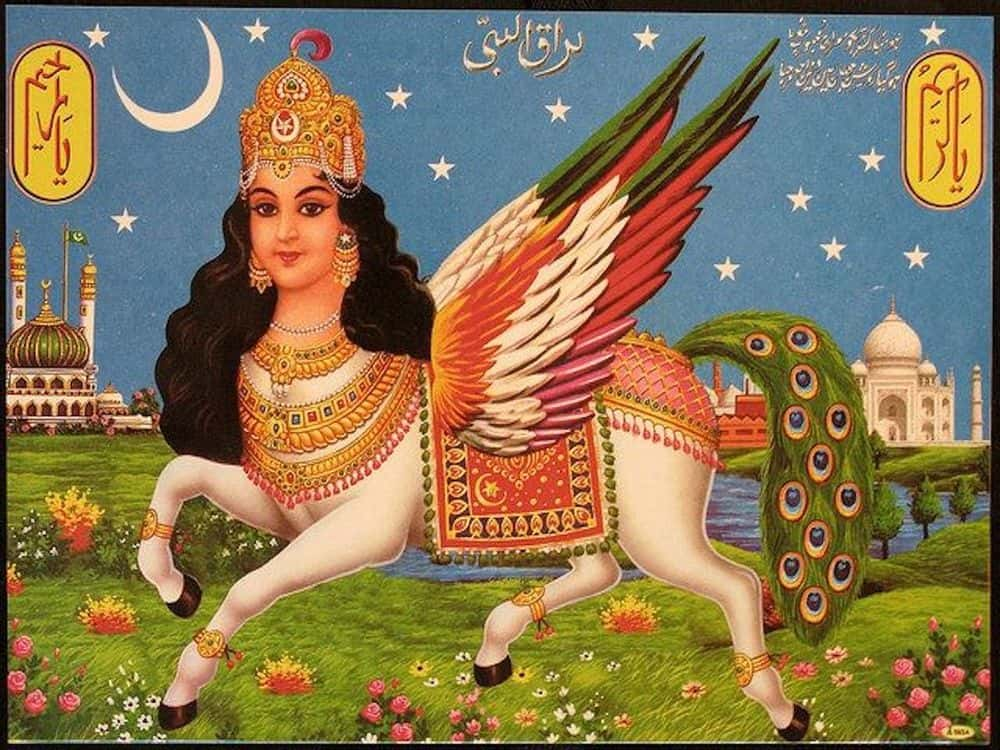
Buraq
Hippalectryon
Let’s go back to the Greek pantheon. The Hippalectryon is a hybrid between a rooster and a horse. The Hippalectryon, according to Aristophanes, is “so comically ugly that it invited ridicule from people around it, thereby sending bad away for life.” You can notice this quotation of his in The Frogs.
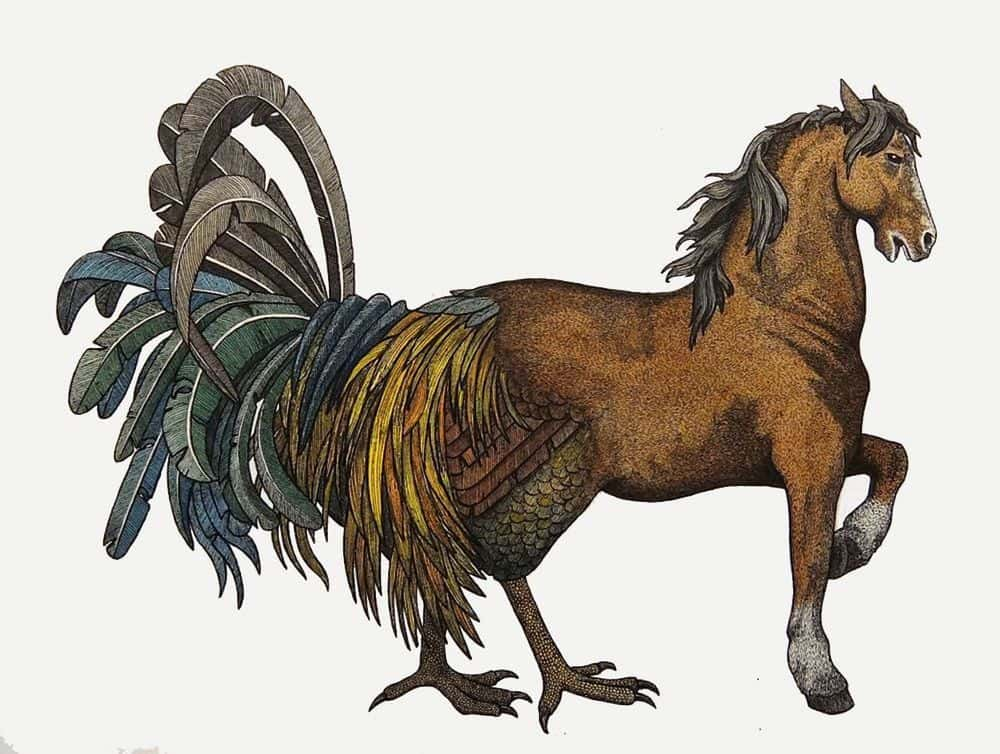
Hippalectryon
Khepri
The Khepri seems to us to be a character from a comic book. It is based on Egyptian mythology, where it is depicted as a humanoid man with a beetle head. Certain representations of it often show goat legs, but this is not necessarily the case—what a unique blend. We doubt you’ve ever seen something like this before.
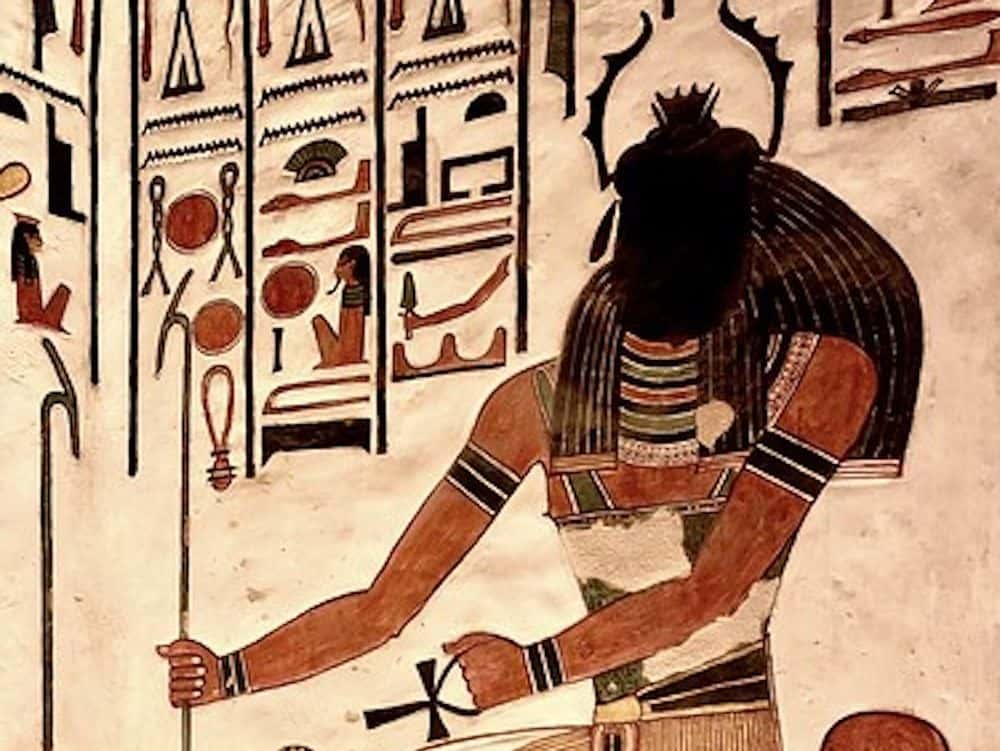
Khepri
Monocerus
A Moncerus is claimed to resemble a Unicorn in Greek mythology. However, when it comes to Medieval lore, things are a bit different. It was claimed to have the “head of a stag, the body of a lion, the wings of an ape, and the tail of a boar” in the Middle Ages, in addition to the potential to pierce elephant hide. Oh my goodness. It is unquestionably a mesmerizing supernatural beast. That’s just what we’re going to do!
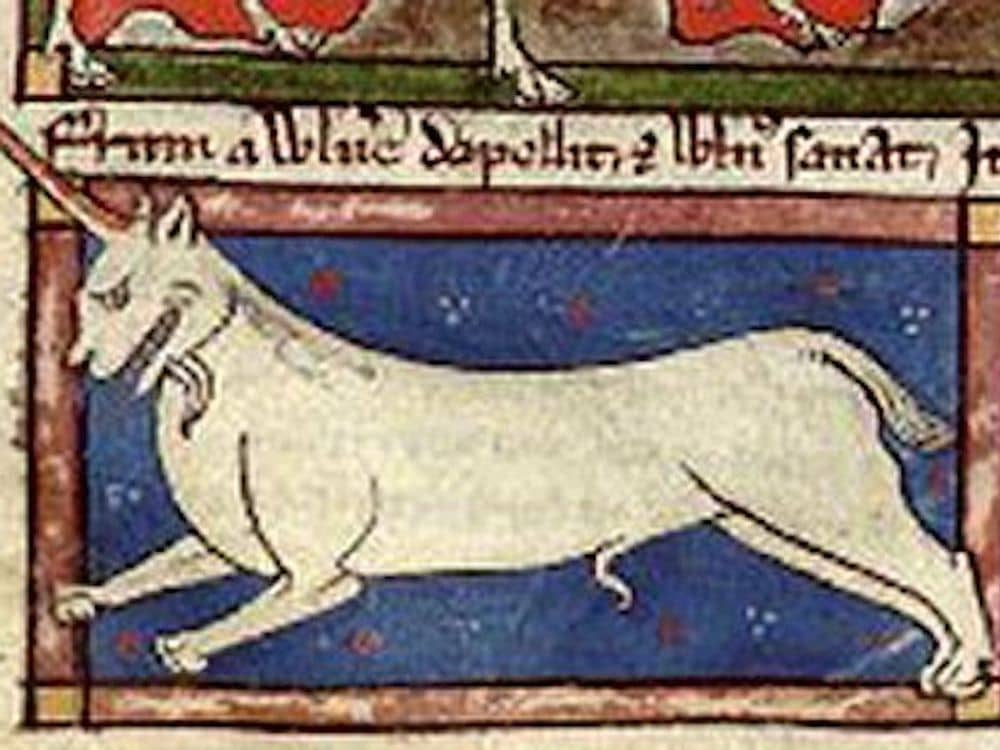
Monocerus
Humanzee
The humanzee is a fictional combination of chimpanzee and man. (Homo sapiens sapiens x Pan). Serious endeavors have been undertaken to produce such a hybrid. The term humanzee in portmanteau seems to have been in use for a human-chimpanzee hybrid in the 1980s.

Humanzee
Huarizo
According to a new genetic analysis conducted at the University of Minnesota, the natural mechanism could not be entirely infertile. A huarizo and an alpaca are related, as the huarache (species of mountain sheep/gazelle sheep) is a combination of males and females. Huazos seem to be the most related to South American camelids in terms of fiber, size, and size though they are smaller.

Huarizo
Polecat–mink
A polecat–mink hybrid is a cross between a European polecat and a European mink, also recognized as khonorik by fanciers and Khor-tumak by furriers. Such interbreeding is highly difficult to breed and occurs only as of the European mink population decreases.

Polecat Mink
Polecat–ferret
A hybrid polecat–ferret, is a cross between a wild European polecat and a domestic animal ferry. A cross between the two animals is distinguished by a white neckband, white feet, and white hair intermixed among the fur.

Polecat–ferret
Pine Marten
The Pine Marten’s ears are longer and more pronounced than the Polecat’s. The pine marten has a dark brown frame, a paler yellow belly and throat, and a reddish-brown head. The polecat, which has white markings on its forehead and a black band across its muzzle, resembles a badger’s mask.

Pine Marten
Gamebird
Crossbreeding of game bird types, such as ducks and domestic poultry, results in gamebird hybrids. These hybrid animals are common in the wild, yet humans are often produced by humans, either deliberately or unintentionally.

Gamebird
Golem
Golems are depicted as inanimate beings formed of inanimate matter, such as clay or mud, that have been revived to perform certain Jewish folklore activities. A golem is said to be designed to defend Jews from antisemitic violence in some stories. According to tradition, golems are very obedient and would follow orders to the letter, but their creators had to be very cautious about what they expected them to do.

Golem
Ogre
Ogres feature in mythology and folklore worldwide, and although the word is derived from the ancient Etruscan god Orcus, the beast itself is derived from the man-eating creature. Many of us have heard of ogres because of Shrek, but Shrek isn’t the typical ogre. Ogres are large, massive, and hairy creatures with a voracious appetite. They’re depicted as either bland and dim-witted or brutal, but who knows? Perhaps they’re layered in the manner of an onion.

Ogre
Fairies
Faeries, also known as fairies, fey, or fae, originated in Old French medieval romantic stories. These supernatural beings or ghosts have existed in various myths, folklore, and tales throughout history, even up until the present day. When most people think about fairies or faeries, they see small, winged, mythical creatures. Outside of Victorian painting, fairies were rarely shown with wings. In legend, faeries were known to travel using sorcery and often catch a ride on the back of a friendly crow.

Fairies
Gorgon
The Gorgons, like Medusa, were terrifying beings capable of reducing their prey to stone with a single look. The Gorgons’ presence was an odd mix between lovely and frightening, with their most distinctive feature being that they wore live snakes rather than fur. The myths of Gorgons teach one not to be deceived only by looks.

Gorgon
Mermaid
Mermaids have long captivated citizens due to their unusual allure. We can track myths of half-human, half-fish creatures back to Babylon. Merpeople can also be found in Syria, Polynesia, and Greek mythology. If some societies portrayed mermaids as beautiful and loving (in Irish folklore, mermaids might transform into human form and marry humans), others described them as cruel and capable of hastening and creating a disaster.

Mermaid
Minotaur
According to Greek myths, the Minotaur was the son of the Goddess of Crete and a powerful bull who came from the sea. The Minotaur had a human body as well as a bull’s head and tail. King Minos was so outraged by this creation that he constructed the Labyrinth, a complicated maze intended to trap him.

Minotaur
Aqrabuamelu
The Aqrabuamelu, or scorpion, is a horrific beast from ancient Mesopotamia, most notably from Babylonian origin myths. They are a hybrid of a scorpion and an individual, with a scorpion’s body and a person’s face, torso, and arms. They are guards and often warn travelers who are in danger because they looked terrible and were created to battle the Gods.

Aqrabuamelu
Fauns
Fauns or goat men were introduced into Roman mythology by Greek Satyrs. Satyr’s existence was dependent, in turn, on the god Pan. A man’s upper body with the legs and tail of a goat. The art depicts other goatlike features such as horns and pointy ore. These goats offered assistance to travelers in need.

Fauns
